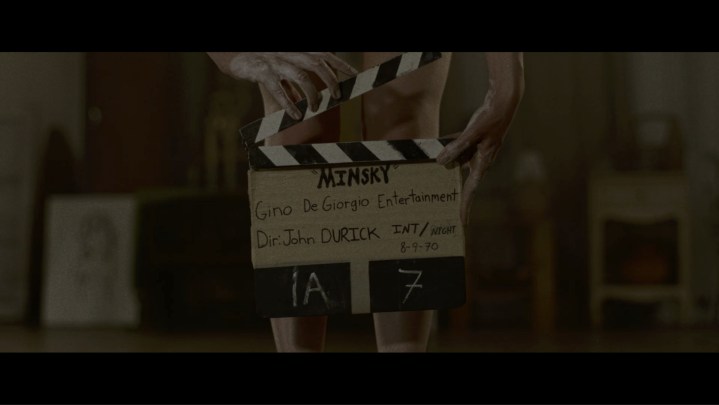There are plenty of games coming out this summer that are worth getting excited about. RPG fans will have their hands full with Soul Hackers 2 and Xenoblade Chronicles 3. Saints Row will look to hold Grand Theft Auto fans over as they continue to wait for its far-off sixth installment. And of course, Stray is looking to melt hearts with its cat-centric gameplay.
The most exciting game of the summer, though, is one you may not have heard of yet. Immortality is the latest project by Half Mermaid Productions and Her Story director Sam Barlow. Like Barlow’s previous works, it’s a narrative game where players scour a database of full-motion video (FMV) clips to solve a mystery. The difference is that players aren’t looking through police interviews and surveillance footage; they’re diving into lost movie footage that spans decades.
Based on a demo I played at Tribeca Fest, Immortality is not only shaping up to be Barlow’s most ambitious work to date, but perhaps the most impressive FMV projects ever. It’s a staggering interactive experience that I can’t stop thinking about days after playing it.
Match cut
Immortality centers around Marissa Marcel, an actress who has mysteriously vanished. Marcel had three starring roles to her name between 1968 and 1999, but none of those films saw the light of day. The game gives players access to a wealth of footage, from dailies to rehearsal clips to filmed table script reads, which they can scrub through to try and find clues about her disappearance.

It’s much more subtle than something like Her Story. In that game, players looked through police interviews with a murder suspect to solve a criminal case. All the dialogue directly pertained to the investigation, so it was easy to piece together. Immortality requires a much sharper eye. Players need to separate moments of filmed fiction from on-set reality. One-off lines and simple body language become major clues.
In one clip, I catch two actors smooching on the set after the director has called cut. Soon, I’m in a rabbit hole trying to figure out who the mystery man is and where else he shows up in Marcel’s life. Was he present at any table reads? Did he say anything suspicious while on the set? Is there a double meaning behind some of his scripted lines or am I just reading too deep into it? There’s a lot more brainwork involved than simply listening for important lines.
Because of that, Immortality features a much different gameplay setup than Barlow’s previous titles. Rather than typing in keywords to discover new footage, players click on footage itself. Tap a script sitting on a table and you’ll jump over to another clip where that script appears on-screen. That goes for people too, as players can click on an actor’s face and seamlessly swap to another clip via a “match cut.”

It’s much easier to get lost in Immortality than, say, Telling Lies, another Barlow game. I found myself hopping between clips at a quick pace without fully watching each, likely missing important details. While it’s a little overwhelming at times, the game fortunately makes an effort to organize clips for players by laying out discovered footage in a handy timeline. Within 30 minutes, I’d discovered nearly two-dozen video clips all packed with nuances worth studying.
Movie magic
I can’t overstate how mind-bogglingly ambitious the project is. Half Mermaid has essentially created three fictional films, all of which are period pieces. Take the 1968 section of the game, for instance, which revolves around a gothic film called Ambrosio. During my demo, I saw scenes from the fictional film itself, which are a dead ringer for a 1960s historical drama. But that level of detail has to be reflected in the behind-the-scenes clips and supplemental footage too. Later, I find a late-night talk show interview from the time, which looks just like an episode of Johnny Carson’s run on The Tonight Show.
It’s an impressive trick, but a functional one too. It creates a visual literacy in a game that revolves around a complicated timeline of events. I can always tell the year by examining the quality of the footage or the haircuts (one casual behind-the-scenes clip features some unmistakably ,70s hairdos). That lets me more fluidly investigate clips without stopping to check the timeline.

Part of me wishes I hadn’t played Immortality, simply because I can’t get it out of my head. I only scratched the surface of Marcel’s story during my 30 minutes with the game, but it continues to haunt me. I’m replaying scenes in my head, trying to connect the dots despite only having a few to work with. If the final game is as mystifying as that, I imagine it’ll find itself high on my game of the year list come December.
Immortality launches on July 26 for PC and Xbox Series X/S, with more platforms to be announced. It’ll be available on Xbox Game Pass at launch.
Editors’ Recommendations
Credit: Source link


Comments are closed.